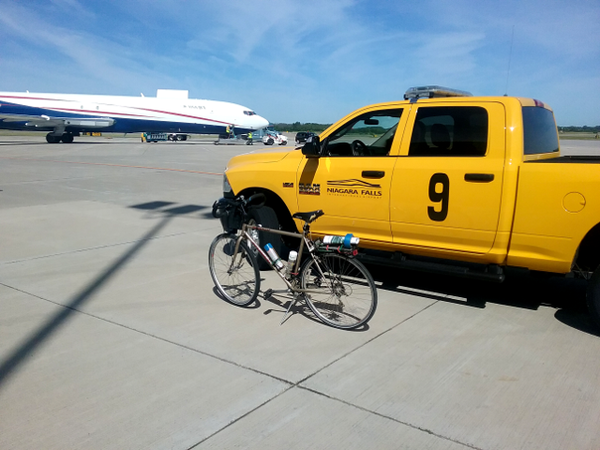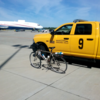I may get asked to measure and certify a 5K course on a big air base… on the runway. This is a combination civilian-military base with a 9,800 foot main runway. I’ve talked to the RD, he says air operations will give me a time slice where the runways are all mine to measure with no planes using the runways or taxiways. Today I talked with a committee member and he thinks nobody thought to ask if we could leave any paint markings or survey nails in their tarmac – but the answer is probably “No!”. We will have both concrete and asphalt. I’ve never walked out on the runways there and may not have good physical reference points.
It occurred to me that the simple route appears on Google Earth to be about 200 feet short of an exact 5K. What I’m inclined to do is meticulously define the loop, then certify the 5K as exactly one loop of the defined route plus 200 feet, or whatever the value actually is based on our calibrated Jones Counts.
If we could trust the RD to bring a tape measure then he could place his start line anywhere on the loop and then the finish will need to be setup at a 200 foot overlap of the loop.
I don’t like the idea of trusting an RD to use a tape, but I do like the flexibility of terminus placement and no need for nails and paint.
What's your view? Certified or not it should be an awesome run!
Jeff John
New York


